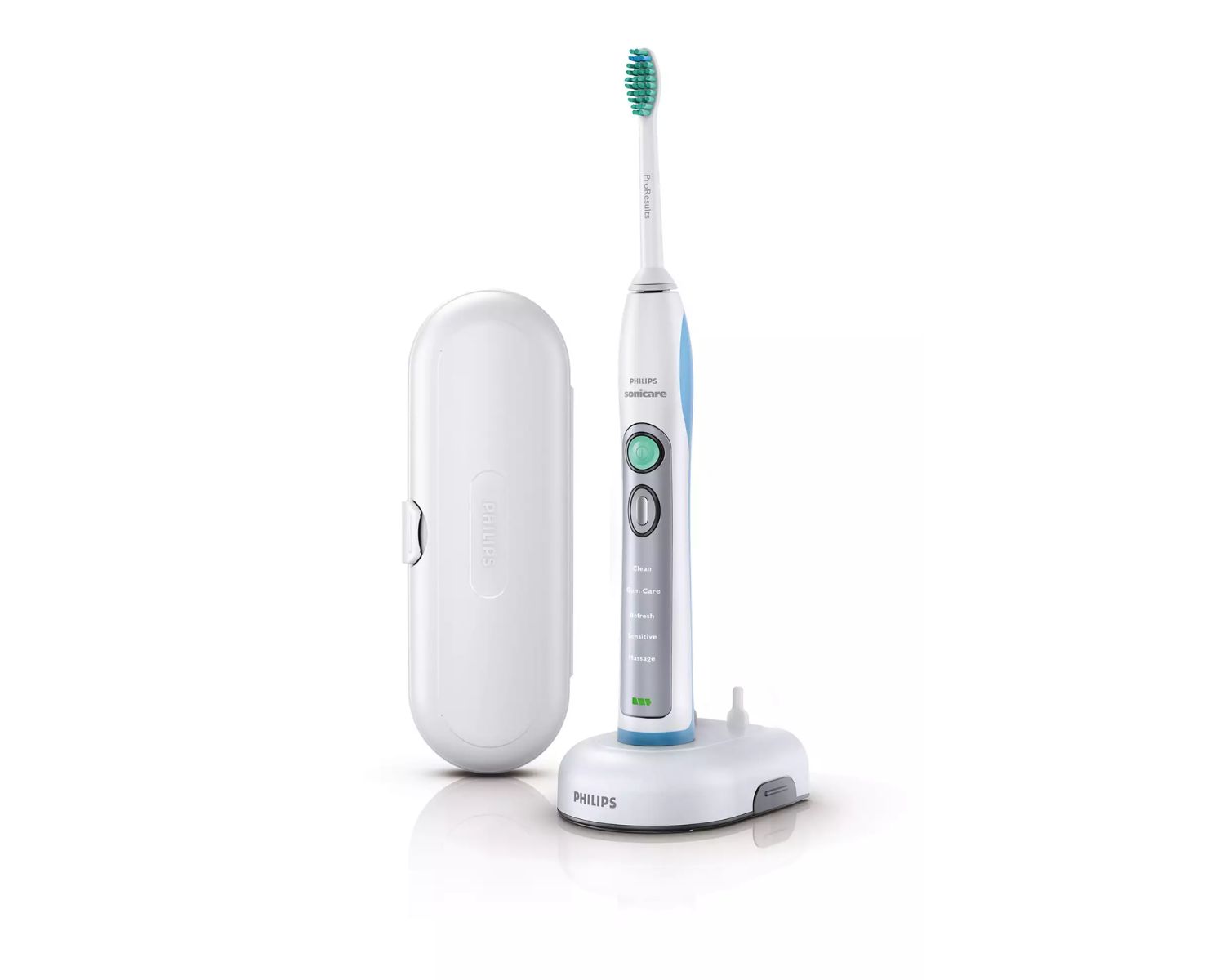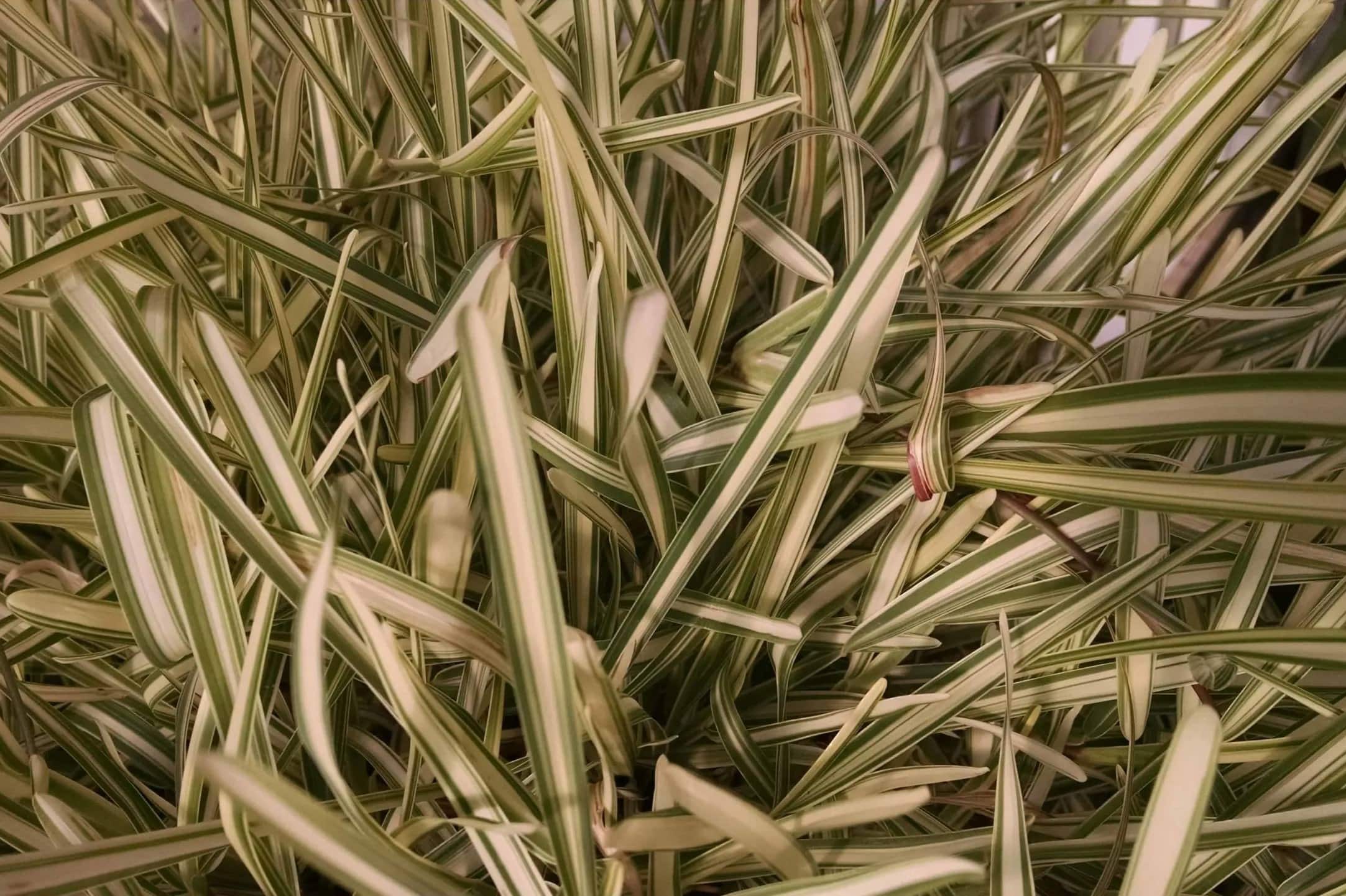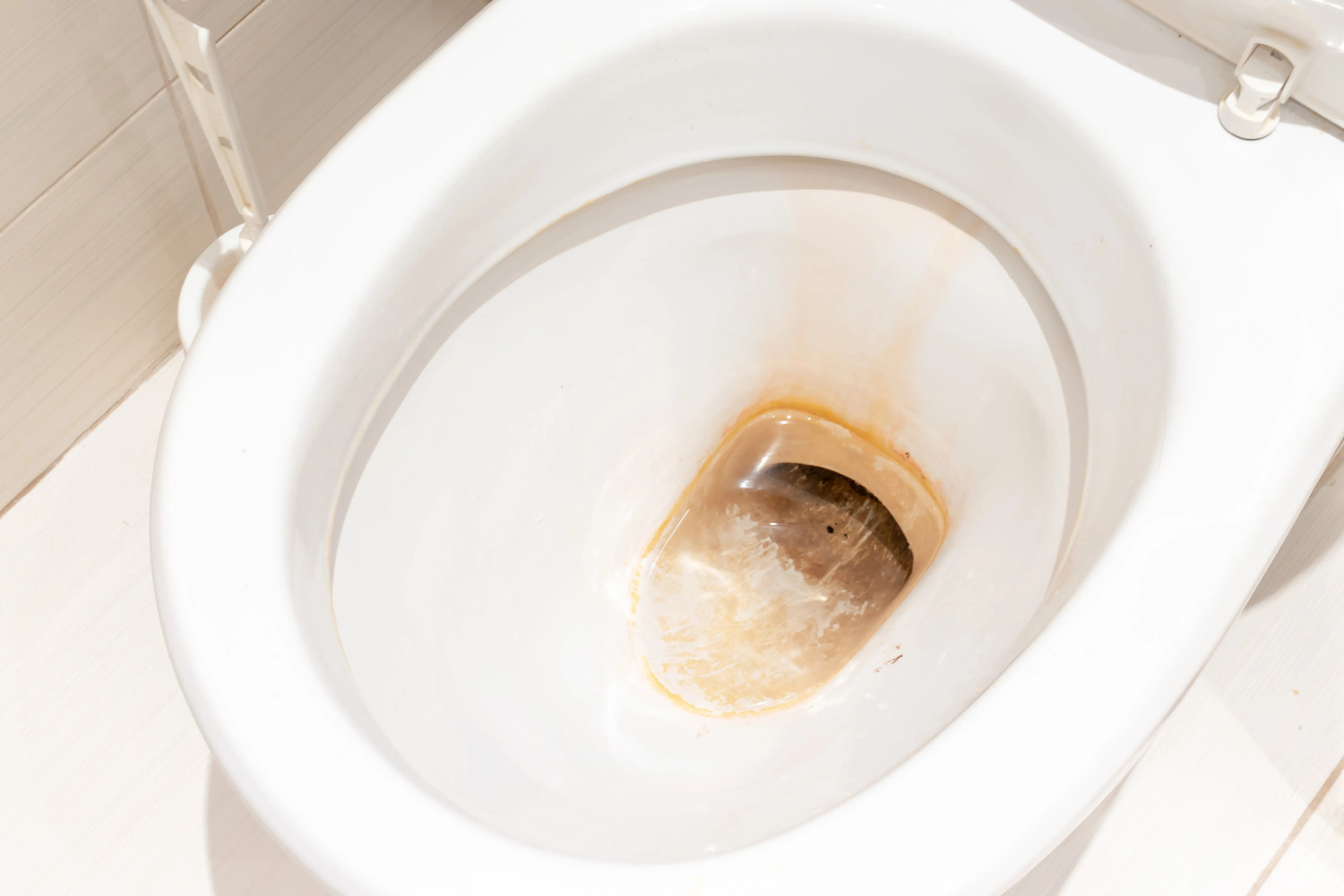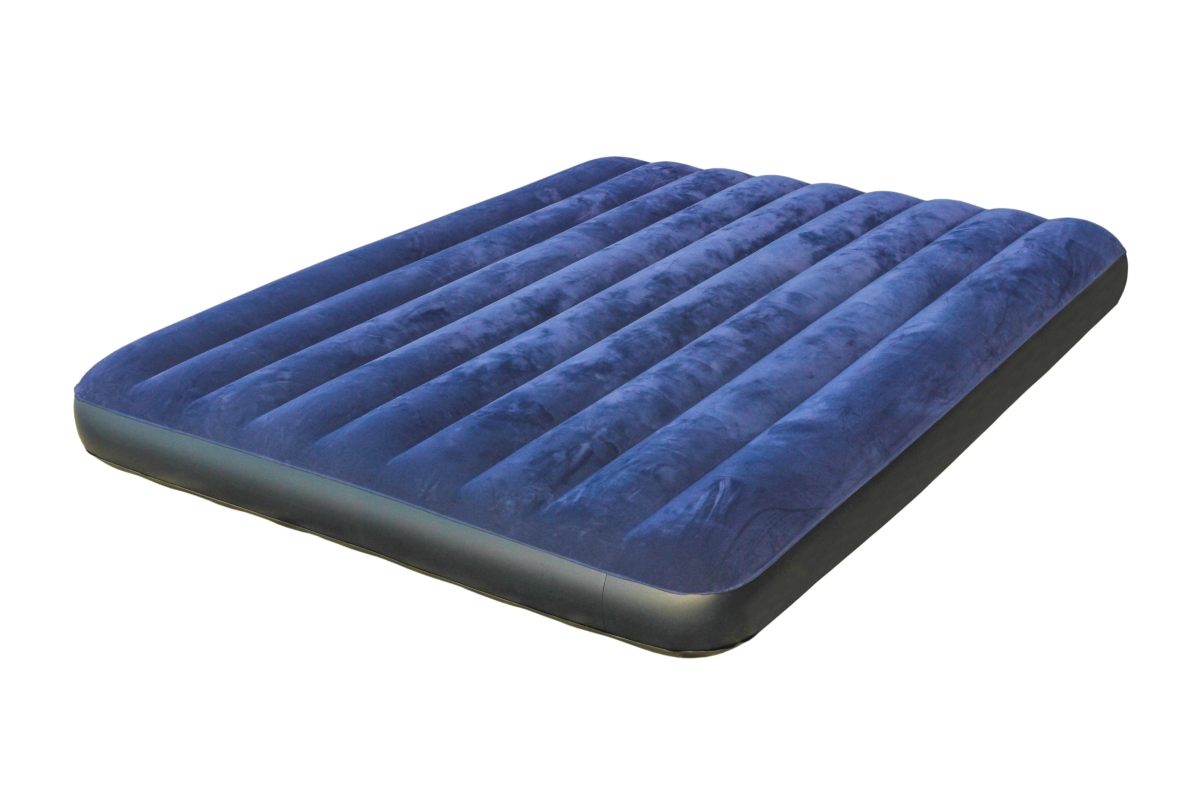Home>Furniture>Bedroom Furniture>Why Is My Mattress Pad Yellow
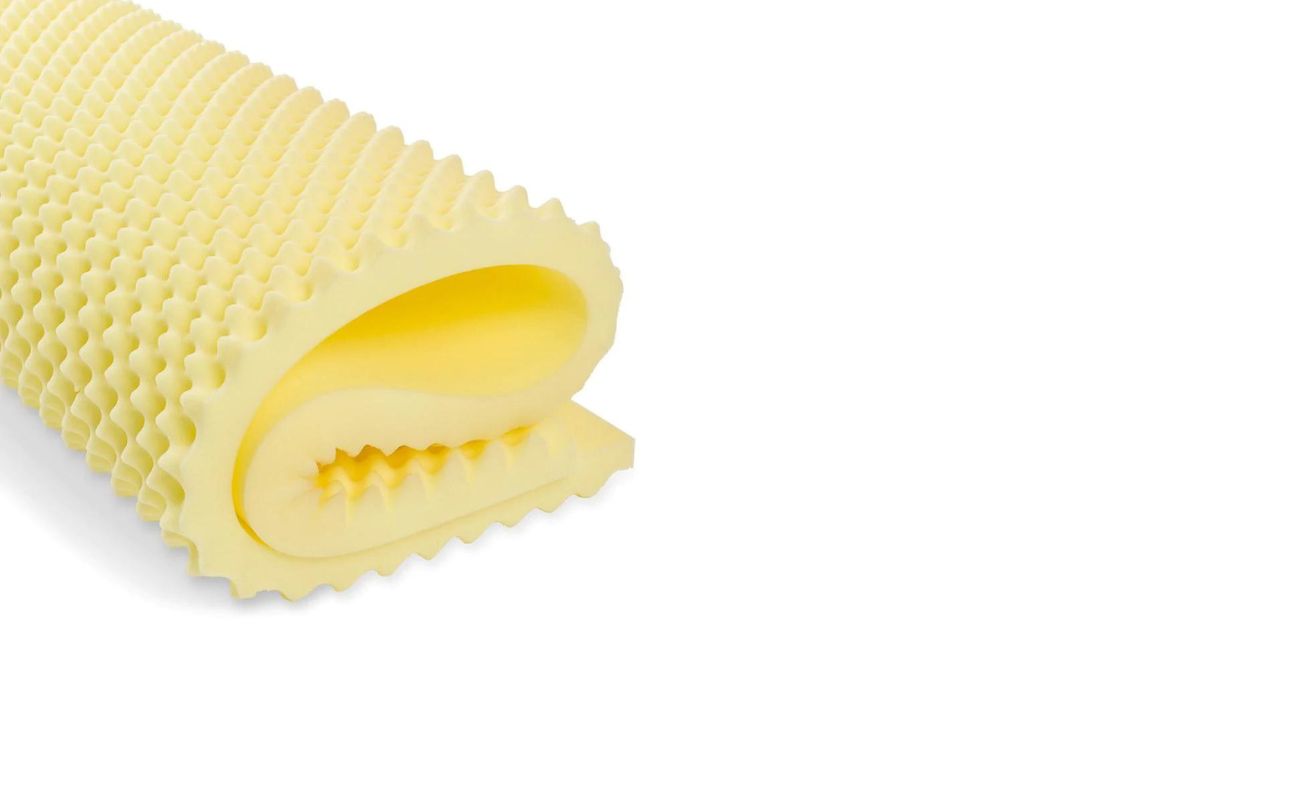

Bedroom Furniture
Why Is My Mattress Pad Yellow
Modified: August 28, 2024
Discover why your mattress pad is turning yellow and how to prevent it. Keep your bedroom furniture looking fresh and clean with these tips.
(Many of the links in this article redirect to a specific reviewed product. Your purchase of these products through affiliate links helps to generate commission for Storables.com, at no extra cost. Learn more)
Introduction
Having a comfortable and clean sleeping environment is essential for getting a restful night’s sleep. Your mattress pad serves as an important barrier between you and your mattress, protecting it from spills, stains, and general wear and tear. However, over time you may notice that your once pristine white mattress pad has started to develop a yellow tinge. This discoloration can be unsightly and raise concerns about the cleanliness and hygiene of your sleep surface.
In this article, we will explore the various causes of yellowing mattress pads and provide tips on how to prevent and address this issue. Whether you’re a homeowner, hotelier, or simply concerned about maintaining the longevity of your mattress, understanding the reasons behind a yellow mattress pad is essential.
So, let’s dive into the common culprits that can lead to a yellow mattress pad and discover how you can keep yours fresh and clean.
Key Takeaways:
- Prevent yellowing of your mattress pad by choosing high-quality, natural materials, and using protective covers. Address stains promptly and practice regular cleaning to maintain a fresh and hygienic sleep surface.
- Understand the causes of yellowing, such as natural aging, stains, and health conditions, to take proactive measures. Implement preventive maintenance, use protective covers, and address stains promptly to preserve your mattress pad’s longevity and cleanliness.
Read more: Why Is My Projector Yellow
Causes of Yellow Mattress Pads
There are several reasons why a mattress pad may turn yellow over time. These causes can be categorized into natural causes, stains and spills, aging and wear, and health conditions. Let’s explore each of these in more detail.
Natural Causes
Some degree of yellowing is natural and can be attributed to the natural aging process of fabrics. Over time, the fibers in your mattress pad may break down, leading to a change in color. This is more common with lower quality mattress pads or those made from synthetic materials.
Stains and Spills
Accidental spills and stains can also contribute to the yellowing of a mattress pad. Sweat, oils from your body, and other substances can seep into the fabric, causing discoloration over time. Additionally, if your mattress pad is not adequately protected, it may absorb spills from beverages or food, further adding to the yellowing effect.
Aging and Wear
Regular use and the passage of time can take a toll on your mattress pad. With each use, dust, dead skin cells, and body oils can accumulate, leading to discoloration. Friction from body movement can also contribute to the breakdown of the fabric, causing it to lose its original color.
Read more: Why Is My Pillowcase Turning Yellow
Health Conditions
In some cases, health conditions can be a factor in the yellowing of a mattress pad. If you suffer from conditions like excessive sweating (hyperhidrosis) or urinary incontinence, the moisture and substances expelled by your body can stain the fabric over time. This can be particularly problematic for individuals who require bed rest or spend extended periods in bed.
Understanding the causes of yellowing mattress pads is crucial in addressing the issue effectively. In the following sections, we will explore preventive measures and maintenance practices that can help keep your mattress pad looking fresh and clean.
Natural Causes
One of the reasons your mattress pad may turn yellow is due to natural causes. Over time, the fibers in your mattress pad can break down and lose their original color. This is more likely to occur with lower quality mattress pads or those made from synthetic materials.
Natural yellowing of a mattress pad can happen for several reasons:
1. Aging of the Fabric
As your mattress pad ages, the fibers in the fabric can weaken or degrade. This can result in a yellowing effect. The breakdown of the fibers is a natural process and can be accelerated by factors such as exposure to sunlight, heat, and frequent washing. Higher-quality mattress pads made from natural materials may be less prone to this type of yellowing.
2. Chemical Reactions
In some cases, the yellowing of a mattress pad can be caused by chemical reactions between the fabric and substances it comes into contact with. This can include reactions to body oils, sweat, skin care products, or even cleaning agents. These reactions can impact the color of the fabric, leading to a yellowed appearance.
Read more: Why Is My Toilet Bowl Yellow
3. Natural Discoloration of White Fabrics
White fabrics, including white mattress pads, are more susceptible to showing discoloration over time. Even without any specific causes, white fabrics tend to naturally yellow as they age. The natural yellowing process can be more noticeable on white mattress pads compared to colored ones.
To prevent or minimize the yellowing of your mattress pad due to natural causes, here are a few tips:
– Choose a high-quality mattress pad made from natural materials like cotton or bamboo, which are less prone to yellowing.
– Avoid exposing the mattress pad to direct sunlight or excessive heat, as this can expedite the breakdown of fibers.
– Follow the manufacturer’s instructions regarding washing and care. Use gentle cycles and mild detergents to prevent unnecessary wear and tear.
– Consider using a mattress protector or investing in a mattress topper to provide an extra layer of protection for your pad.
By understanding the natural causes of yellowing in mattress pads and taking proactive measures to prevent and minimize it, you can maintain a cleaner and more visually appealing sleep surface. In the next sections, we will explore other causes of yellowing, such as stains and spills, and provide tips on how to address and prevent them.
Stains and Spills
Accidental spills and stains can contribute significantly to the yellowing of a mattress pad. Substances like sweat, body oils, food stains, beverages, and even pet accidents can seep into the fabric, causing discoloration over time.
1. Sweat and Body Oils
During sleep, our bodies naturally produce sweat and oils. Over time, these substances can penetrate the mattress pad fabric, leading to yellow stains. This is especially common if you tend to sweat excessively or have oily skin. The yellow color is often more pronounced in areas where your body makes direct contact with the mattress pad.
2. Food and Beverage Stains
Enjoying a snack or beverage in bed can be cozy, but it can also result in accidental spills and stains on your mattress pad. Foods and beverages that contain dyes or strong-colored ingredients, such as coffee, tea, red wine, or sauces, can leave behind noticeable stains that contribute to the yellowing effect.
Read more: Why Do Mattress Toppers Turn Yellow
3. Pet Accidents
If you have pets that occasionally share your bed, accidents can happen. When urine or other bodily fluids come into contact with your mattress pad, they can create stubborn stains and unpleasant odors. If not promptly addressed, these stains can lead to yellowing and affect the overall cleanliness of your mattress pad.
To prevent and address stains and spills effectively, follow these tips:
– Act quickly: As soon as you notice a spill or stain, address it promptly. The longer it sits on the fabric, the more challenging it will be to remove.
– Blot, don’t rub: Use a clean cloth or paper towel to blot the spill, absorbing as much liquid as possible. Avoid rubbing, as this can spread the stain and push it deeper into the fabric.
– Use stain removers: If the stain persists, use a mild stain remover specifically designed for the type of fabric your mattress pad is made of. Always test it on a small, inconspicuous area first to ensure it doesn’t cause further damage.
– Regular cleaning: Incorporate regular cleaning into your mattress pad maintenance routine. Follow the manufacturer’s instructions for washing and drying, ensuring you use the appropriate temperature and cycle settings.
By promptly addressing stains and spills, you can prevent them from becoming permanent and contributing to the yellowing of your mattress pad. In the next section, we will discuss another common cause of yellowing: aging and wear.
Aging and Wear
As time goes by, regular use and the passage of time can take a toll on your mattress pad. Dust, dead skin cells, body oils, and other particles can accumulate over time, leading to discoloration and yellowing. Additionally, the friction from body movement can contribute to the breakdown of the fabric, causing it to lose its original color.
1. Accumulated Dust and Debris
Even with regular cleaning, dust, pet dander, and other airborne particles can settle on your mattress pad. These particles, along with dead skin cells shed during sleep, can build up over time and contribute to a yellowed appearance. Regular vacuuming and cleaning can help minimize the accumulation of these substances.
2. Body Oils and Perspiration
As you sleep, your body produces oils and perspires, and these substances can transfer onto your mattress pad. Over time, the accumulation of body oils and sweat can lead to yellow stains on the surface of the pad. Additionally, the moisture from perspiration can create a favorable environment for the growth of bacteria, which can further contribute to the discoloration and odor.
Read more: Why Is My Ornamental Grass Turning Yellow
3. Friction and Wear
Regular movement and body rotations during sleep can cause friction between your body and the mattress pad. Over time, this friction can wear down the fabric, causing it to lose its original color and develop a yellowed appearance. This is particularly true for areas where your body makes direct contact with the pad, such as the torso or hips.
To minimize the yellowing of your mattress pad due to aging and wear, consider the following tips:
– Regularly vacuum your mattress pad to remove dust and debris.
– Follow the manufacturer’s instructions for cleaning and maintenance.
– Rotate and flip your mattress pad periodically to distribute the wear evenly.
– Consider using a mattress protector or cover to provide an additional layer of protection against oils, sweat, and other substances.
By taking proper care of your mattress pad and addressing signs of wear and tear promptly, you can help prolong its lifespan and maintain a cleaner and fresher sleep surface. In the next section, we will explore how certain health conditions can contribute to the yellowing of mattress pads.
Health Conditions
In some cases, certain health conditions can contribute to the yellowing of a mattress pad. Individuals who experience excessive sweating, also known as hyperhidrosis, or have urinary incontinence may find that the moisture and substances expelled by their bodies can stain the fabric over time.
1. Hyperhidrosis
Hyperhidrosis is a condition characterized by excessive sweating. It can occur all over the body, including during sleep. The increased moisture from sweating can seep into the mattress pad, leading to yellow stains and discoloration. If you suffer from hyperhidrosis, it’s important to take extra measures to protect your mattress pad and ensure proper ventilation to minimize the impact of sweat on its appearance.
2. Urinary Incontinence
Urinary incontinence is a condition where individuals have difficulty controlling their bladder, leading to involuntary urine leakage. This can occur during sleep, resulting in stains and odor on the mattress pad. Urinary incontinence can be a particularly challenging issue, as the stains are not only visually unappealing but can also have a lasting odor. Using protective covers or specialized mattress pads designed for incontinence can help mitigate the impact on your mattress pad.
Read more: Why Is My Mattress Brown
3. Other Health-Related Factors
Other health-related factors, such as skin conditions or medications that cause excessive sweating or body fluids, can also contribute to the yellowing of a mattress pad. It’s essential to identify and address any specific health concerns or management strategies that may contribute to the discoloration of your mattress pad.
If you have any of these health conditions, consider these tips to minimize the impact on your mattress pad:
– Use mattress protectors or waterproof covers designed to protect against moisture and spills.
– Consider using absorbent pads or disposable underpads to provide an additional layer of protection.
– Wash and clean your mattress pad regularly, following the manufacturer’s instructions and using appropriate cleaning agents.
– Consult with medical professionals to manage any underlying health conditions effectively.
By understanding and addressing the impact of health conditions on the discoloration of your mattress pad, you can take proactive steps to maintain a clean and healthy sleep environment. In the next section, we will discuss preventive measures and maintenance practices that can help prevent yellowing and maintain the longevity of your mattress pad.
Prevention and Maintenance
Preventing and maintaining the cleanliness of your mattress pad is key to avoiding yellow discoloration and preserving its longevity. By implementing a regular cleaning routine and taking preventive measures, you can ensure that your mattress pad stays fresh and clean. Here are some tips to help you in this endeavor:
1. Regular Cleaning
Regular cleaning is essential for preventing the buildup of sweat, oils, and other substances that can contribute to yellowing. Follow the manufacturer’s instructions for washing your mattress pad. Typically, machine washing on a gentle cycle with mild detergent and tumble drying on low heat are recommended. Avoid using harsh chemicals or bleach, as they can damage the fabric and affect its color.
2. Protective Covers
Using a mattress protector or mattress pad cover is an effective way to add an extra layer of protection to your mattress pad. These covers are designed to guard against spills, stains, allergens, and other contaminants. Look for waterproof or water-resistant covers that are breathable to allow for adequate airflow.
Read more: Why Is My Shower Curtain Turning Yellow
3. Addressing Stains Promptly
If you notice any spills or stains on your mattress pad, it’s important to address them promptly. Blot the stain with a clean cloth or paper towel to absorb as much liquid as possible. Avoid rubbing or scrubbing, as this can spread the stain and make it harder to remove. Use a mild stain remover or a mixture of water and gentle detergent to treat the stain. Always test the cleaning solution on a small, inconspicuous area first to ensure it doesn’t cause discoloration or damage.
4. Proper Ventilation
Adequate ventilation is crucial for preventing moisture buildup, which can contribute to yellowing and the growth of bacteria. Allow your mattress pad to air out regularly by removing any bedding and opening windows or using a fan to facilitate air circulation. This helps to keep the fabric dry and fresh.
5. Regular Mattress Rotation
To distribute wear and tear evenly, consider rotating your mattress pad regularly. This can help prevent excessive friction and pressure on specific areas, which can lead to accelerated yellowing. Consult the manufacturer’s instructions for the recommended rotation frequency and method.
By implementing these preventive measures and adhering to regular maintenance practices, you can keep your mattress pad clean, fresh, and free from yellow discoloration. Remember to consult the manufacturer’s guidelines for specific recommendations and care instructions. Finally, always prioritize your personal hygiene and cleanliness to contribute to the overall cleanliness and longevity of your mattress pad.
Regular Cleaning
Regular cleaning is an essential part of maintaining a clean and fresh mattress pad. By removing sweat, body oils, dust, and other particles, you can prevent the build-up of substances that can contribute to yellowing. Follow these tips to ensure effective and safe cleaning of your mattress pad:
Read more: Why Is My Alexa Showing A Yellow Light
1. Check the Manufacturer’s Instructions
Before you clean your mattress pad, always refer to the manufacturer’s instructions for specific cleaning guidelines. Different mattress pad materials may have different requirements, such as specific cleaning agents, water temperature, or machine cycle settings.
2. Pre-Treat Stains
If you notice any visible stains on your mattress pad, it’s important to pre-treat them before washing. Use a mild stain remover or a mixture of water and gentle detergent and apply it directly to the stained area. Gently rub the solution into the stain using a clean cloth or sponge. Allow the pre-treatment to sit for a few minutes before proceeding to wash the mattress pad.
3. Machine Washing
In most cases, mattress pads are machine washable. Place your mattress pad in the washing machine, ensuring it has enough space to move freely. Use a gentle or delicate cycle with cold or warm water, depending on the fabric’s care instructions. Avoid using hot water, as it can damage the materials or cause shrinkage.
4. Use Mild Detergent
When washing your mattress pad, opt for mild detergents that are free of dyes and fragrances. Harsh chemicals can weaken the fibers or leave behind residues that can affect the comfort and appearance of the pad.
Read more: Why Do My Pillows Turn Yellow
5. Gentle Cleaning Cycle
Choose a gentle or delicate setting on your washing machine to minimize the agitation and reduce the wear and tear on the fabric. This will help to maintain the integrity of the mattress pad and prevent premature yellowing caused by excessive friction. If needed, select an extra rinse cycle to ensure all detergent residue is thoroughly removed.
6. Proper Drying
Avoid using high heat settings when drying your mattress pad, as this can damage the fabric and cause shrinkage. Instead, opt for a low or medium heat setting. If possible, air-drying your mattress pad is the best option to further prevent any potential damage. Hang it outside or lay it flat on a clean, dry surface to dry naturally. Ensure the pad is completely dry before placing it back on your mattress.
Regular cleaning of your mattress pad not only helps to prevent yellowing but also contributes to a hygienic and comfortable sleep environment. Aim to clean your mattress pad at least every few months or as needed, especially if there are spills or noticeable stains. By following these guidelines, you can maintain the cleanliness and longevity of your mattress pad.
Protective Covers
Using a protective cover for your mattress pad is an excellent way to add an extra layer of defense against spills, stains, allergens, and general wear and tear. These covers can help prolong the lifespan of your mattress pad and keep it looking clean and fresh. Here’s why protective covers are beneficial:
1. Water and Stain Resistance
Protective covers are designed to be water-resistant or waterproof, which means they provide a barrier that prevents liquids from seeping through to your mattress pad. This is particularly helpful in preventing yellowing caused by spills, sweat, or accidental bedwetting.
Read more: Why Is There A Dent In My Mattress
2. Allergen Protection
If you suffer from allergies or asthma, a protective cover can help create a hypoallergenic barrier between you and your mattress pad. These covers are often made with materials that repel allergens such as dust mites, pet dander, and pollen. This can contribute to better indoor air quality and reduce potential allergen triggers.
3. Easy Cleanup
A protective cover is easily removable and machine washable. This makes it convenient for regular cleaning and maintenance. Simply unzip or remove the cover and follow the manufacturer’s instructions for washing. Having a removable and washable cover can help keep your mattress pad fresh and free from yellowing caused by sweat, oils, or spills.
4. Enhanced Durability
By providing an additional layer of protection, a mattress pad cover can help shield your mattress pad from everyday wear and tear. It acts as a buffer between your body and the pad, reducing friction and minimizing the impact of movements during sleep. This can help maintain the longevity and quality of your mattress pad.
5. Versatile Options
Protective covers come in various styles and materials to suit your preferences. Some are waterproof and noiseless, making them perfect for individuals with incontinence or those who prefer a quieter sleep environment. Others are breathable and offer extra cushioning, enhancing the overall comfort of your mattress pad.
To maximize the benefits of a protective cover, consider the following tips:
– Choose a cover that fits securely over your mattress pad, ensuring it covers the entire surface.
– Follow the manufacturer’s instructions for washing and care to maintain the effectiveness of the cover.
– Regularly inspect the cover for any signs of damage and replace it if necessary.
– If you have specific needs, such as protection against bedbugs or dust mites, look for covers that offer those features.
Overall, investing in a protective cover for your mattress pad is a practical choice. It not only protects your mattress pad from yellowing but also offers added benefits like stain resistance, allergen protection, and durability. With a high-quality protective cover, you can enjoy a cleaner and more hygienic sleep environment for years to come.
Read more: How To Use A Mattress Pad
Addressing Stains Promptly
When it comes to maintaining a clean and fresh mattress pad, addressing stains promptly is crucial. Whether it’s spills from food and beverages or accidents caused by pets or bodily fluids, taking immediate action can prevent stains from setting and minimize the risk of yellowing. Here’s how to address stains on your mattress pad effectively:
1. Act Quickly
As soon as you notice a stain on your mattress pad, it’s important to take immediate action. The longer a stain sits, the more challenging it can be to remove. Promptly addressing the stain increases the likelihood of successful stain removal.
2. Blot, Don’t Rub
When dealing with a stain, avoid rubbing or scrubbing the affected area. This can spread the stain and push it deeper into the fabric, making it more difficult to remove. Instead, use a clean cloth or paper towel to blot the stain gently. Press down on the stain to absorb as much liquid as possible without spreading it further.
3. Use a Stain Remover
If blotting alone doesn’t remove the stain entirely, you can use a mild stain remover specifically designed for the type of fabric your mattress pad is made of. Before applying the stain remover, read and follow the manufacturer’s instructions. Test the stain remover on a small, inconspicuous area first to ensure it doesn’t cause any damage or discoloration.
Read more: Why Is My New Mattress Squeaking
4. Work from the Outside In
When treating a stain, start from the outer edge and work your way toward the center. This prevents the stain from spreading further. Apply the stain remover to a clean cloth or sponge and gently dab the stain, working your way inward. Continue blotting until the stain is lifted.
5. Rinse and Dry
After successfully removing the stain, rinse the area with clean water to remove any residue from the stain remover. Blot the area with a clean, dry cloth or paper towel to absorb excess moisture. Allow the mattress pad to air dry completely before remaking the bed.
6. Seek Professional Cleaning
If the stain persists or you’re uncertain about how to effectively treat it, it may be best to consult a professional cleaning service. They have the knowledge, expertise, and specialized equipment to handle tough stains and restore the cleanliness of your mattress pad.
By addressing stains promptly, you can prevent them from setting and minimize the risk of yellowing on your mattress pad. Remember, prevention is always better than cure. Using protective covers and taking steps to avoid spills and accidents can go a long way in maintaining a cleaner and fresher sleep surface.
Conclusion
Keeping your mattress pad clean and free from yellowing is essential for maintaining a hygienic and comfortable sleep environment. Understanding the causes of yellowing, such as natural aging, stains and spills, aging and wear, and certain health conditions, allows you to take proactive steps to prevent and address this issue.
By implementing preventive measures like regular cleaning, using protective covers, addressing stains promptly, and practicing proper maintenance, you can extend the lifespan of your mattress pad and keep it looking fresh. Regularly cleaning your mattress pad, following the manufacturer’s instructions, and using gentle detergents will prevent the build-up of sweat, body oils, and other substances that contribute to yellow discoloration.
Protective covers act as a shield against spills, stains, and allergens, preserving the cleanliness of your mattress pad. Addressing stains promptly is crucial to prevent them from setting and causing permanent discoloration. Acting quickly, blotting instead of rubbing, and using appropriate stain removers can help lift stains effectively.
Incorporating these preventive measures and maintenance practices into your mattress pad care routine is key to prolonging its lifespan and ensuring a clean sleep surface. By giving attention to the cleanliness and well-being of your mattress pad, you can enjoy a restful night’s sleep and peace of mind knowing that your sleep environment is fresh and hygienic.
Remember, prevention is always better than having to deal with yellowing and stains after they occur. Take care of your mattress pad from the beginning, and it will continue to provide you with years of comfort and support while maintaining its pristine appearance.
Frequently Asked Questions about Why Is My Mattress Pad Yellow
Was this page helpful?
At Storables.com, we guarantee accurate and reliable information. Our content, validated by Expert Board Contributors, is crafted following stringent Editorial Policies. We're committed to providing you with well-researched, expert-backed insights for all your informational needs.
